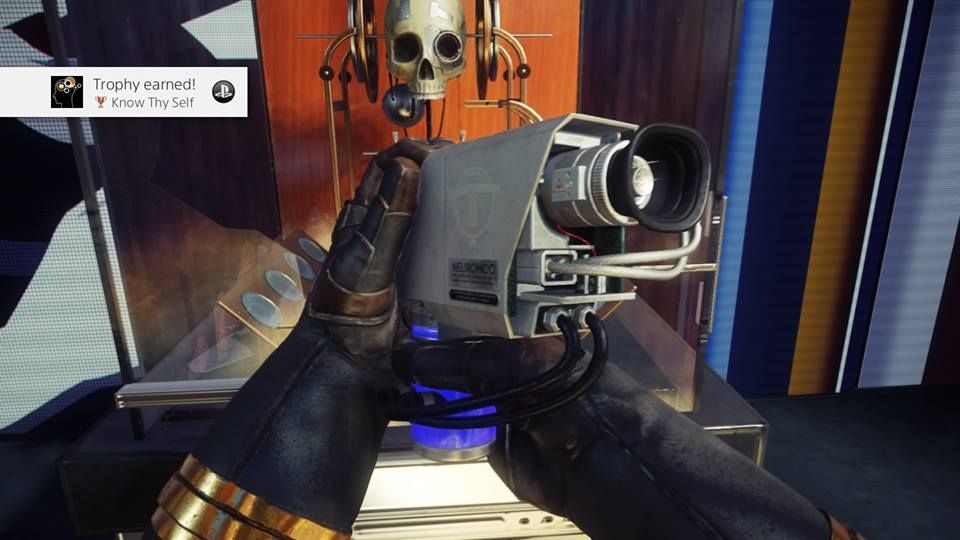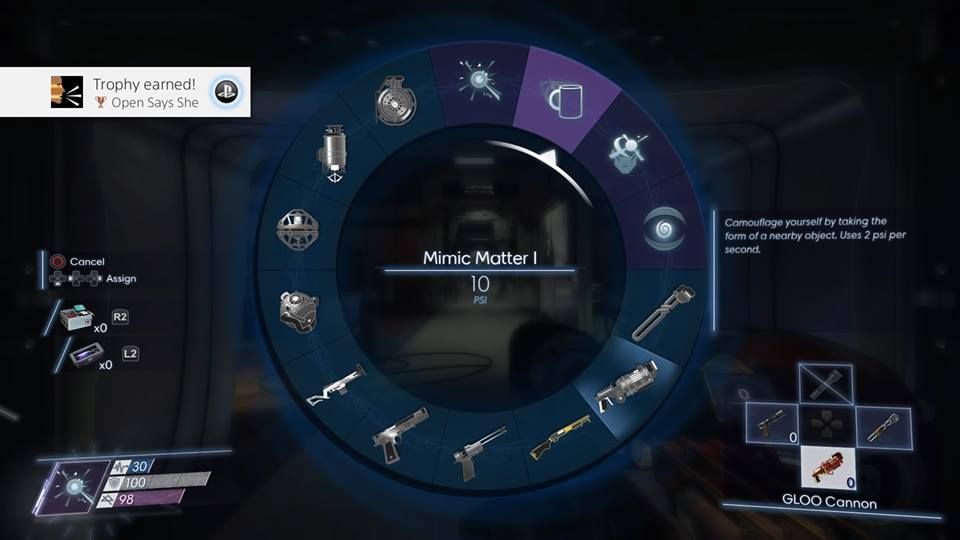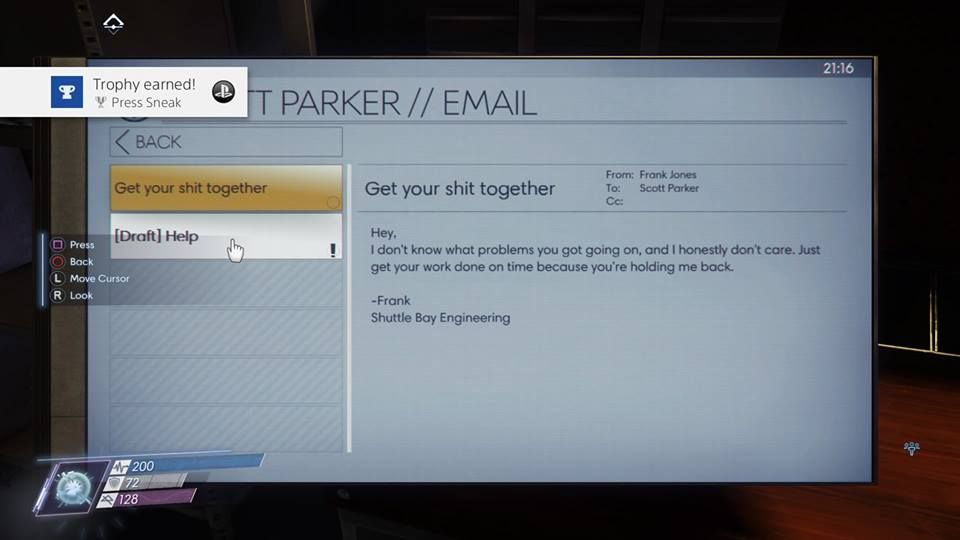Prey (2017): Inspired first hour gives way to tedious trudge

Title: Prey (2017)
Genre: First-person shooter RPG
Platform reviewed on: Playstation 4 (
$59.99
)
Also available on:
PC
,
Xbox One
Developer: Arkane Studios
Publisher: Bethesda Softworks
Release Date: May 5, 2017
This game is rated “M” for mature audiences over the age of 17 by the Electronic Software Ratings Board.
Prey, like the namesake title that inspired it, is at its greatest in the opening moments.
While 2006’s Prey staged an abduction sequence to the inspired musical strains of “Don’t Fear the Reaper,” the 2017 version throws its greatest curveball before you’ve even picked up a weapon. Prey taunts the player to dive headfirst into what promises to be a mindbending adventure, but wonky combat and a narrative payoff that isn’t nearly as satisfying as the set-up in the tantalizing first hour keep this title from soaring to the heights of the games it’s trying to emulate.

You play as Morgan Yu, a scientist whose gender you choose in the game’s opening seconds. Morgan acquires an implant through the eye, called a neuromod, that gives him/her unique powers, which at first are limited to human abilities – things like hacking computers to discover more exposition, lifting heavy objects to reach new areas and sprinting for a longer period of time to evade danger. Later, after you meet the typhon, the game’s antagonistic race of etheric and hostile aliens, you can gain their abilities. Those include shooting telepathic blasts of energy, and perhaps the game’s most novel feature – mimicking items in the environment. The first enemies you meet will have this ability, rendering things like coffee cups, books and other nondescript items strewn about the spaceship Talos 1 a potential threat.
Instruments to fight this scourge are limited. You have access to a shotgun, a pistol and a wrench as conventional weapons. Later, you can pick up electric devices that incapacitate electronic enemies (droid-looking robots that spew fire or shoot electricity if they become corrupted, and ground-mounted turrets that will turn against you if you acquire too many typhon powers). The most inspired weapon, the so-called “GLOO” cannon, shoots bits of gunk that not only slow your enemies, but can be climbed on to reach new areas.

Prey doesn’t hold your hand. You can do whatever you want, when you want to. Which is probably the most fun you’ll have with the game. Set up traps using lures and turrets, or try to mimic your way through hard sections, avoiding the gaze of enemies. Conventional combat, unfortunately, feels clunky and slow. There’s no way to aim down the sights, and the firearms just don’t feel as punchy as they need to. I found myself using the typhon power that shot kinetic bits of energy much more often than the firearms, and not because of a lack of ammo, but because the DPS was just so much more efficient and precise.
Creating bullets, medical kits and other useful items is achieved through the game’s third interesting mechanic, using 3D printing devices called “fabricators” that are located throughout the station. Each item requires a certain amount of material that come in four different categories. You can use other terminals, called “recyclers,” to break down any item in your inventory into these materials, or use a special type of grenade to do it instantaneously at any point during the game. Inventory management feels purposeful throughout Prey, especially when fabrication is required to progress through the story.

That story has all the trappings of what we would expect from the type of narrative-heavy first-person game we’ve come to expect in the years after Half-Life and System Shock, both of which are clear influences here. Computer screens throughout Talos 1 provide bits of exposition, much like the computers that can be hacked in games like Fallout, another title Prey is clearly drawing from. However, assisting survivors of the typhon attack on Talos 1, and the other grand reveal that comes in the game’s closing moments, never achieve the high mark that is established in the game’s first hour.
The player is led to believe they’re making choices that affect humanity and our ability to reach to the stars, as well as make meaningful moral decisions about who lives and dies, and whether it’s really a good idea to give ourselves special abilities that come at a dire cost. The game’s ending reminds you you’re simply playing a game. Perhaps a more focused and well-paced narrative would have made these points land with more authority. As it stands, when the game finally tells you the show’s over, there’s no reason for an encore – except to play some more with that GLOO gun.
Verdict: 3.5/5 stars
* This story was originally published as a post from the blog "The Tech Deck." Read all stories from this blog